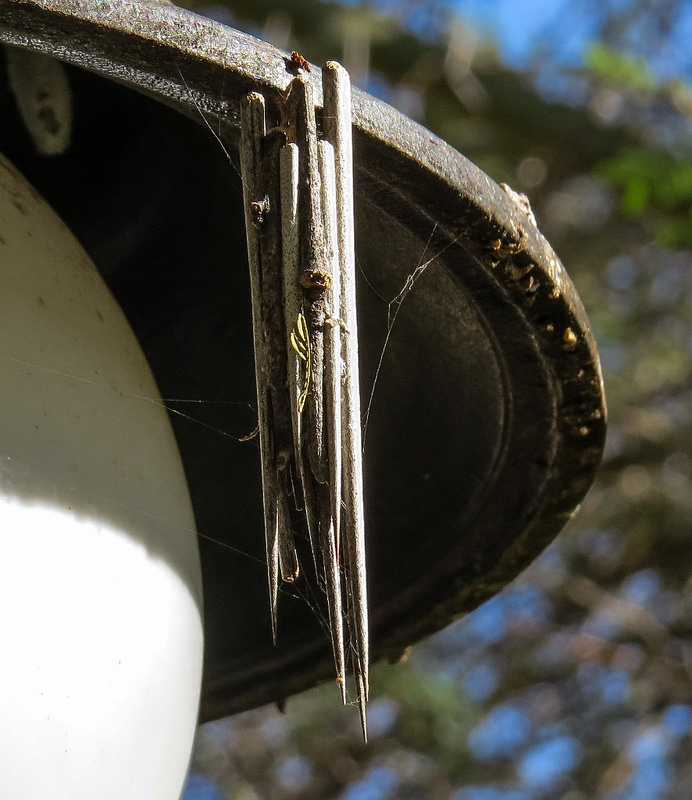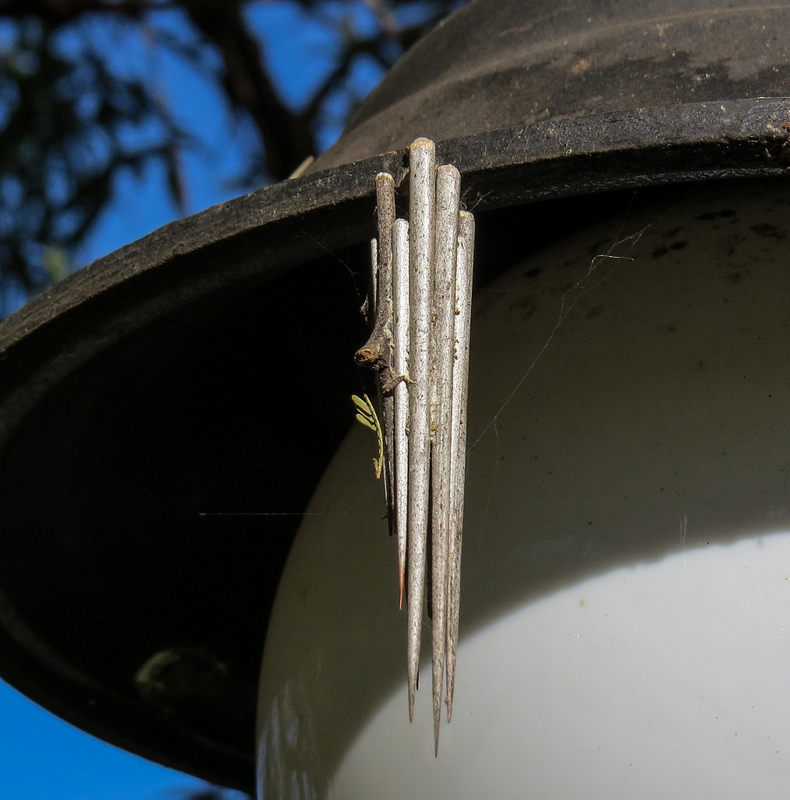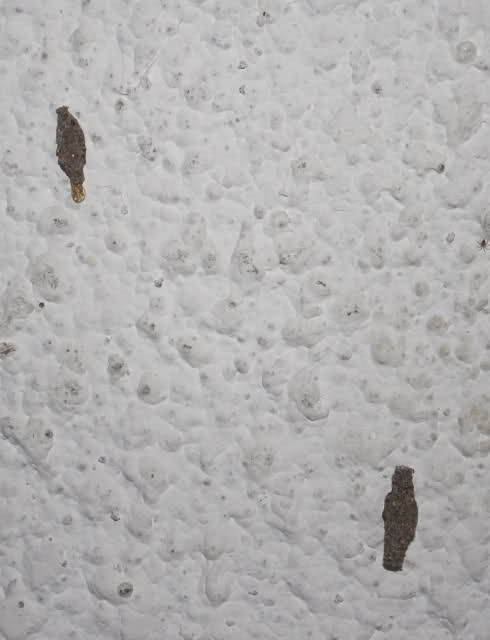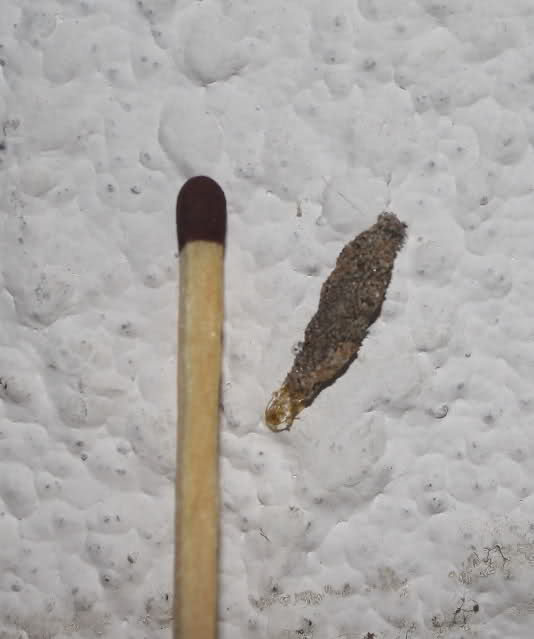Bagworm Moth Eumeta sp., possibly
Eumeta hardenbergi
Superfamily: Tineoidea. Family: Psychidae. Subfamily: Oiketicinae

© steamtrainfan

Bag architecture: composed by Fever Tree Thorns © steamtrainfan
The family Psychidae is world-wide distributed. The bagworm family includes approximately 1000 species, all of which complete larval development within a self-enclosing bag. The family is remarkable in that female aptery occurs in over half of the known species and within 9 of the 10 currently recognized subfamilies. Females are winged in the most primitive genera only, losing wings, legs and other appendages during their evolutionary history.
Young larvae build their bag immediately after the hatchling. They live within the bag until the mature stage. Psychidae larvae are commonly polyphagous.
Description
Length of larva: 22-25 mm; Length of bag: ♂ 25-35 mm, ♀ 30-55 mm; Length of female: 20 mm; Wingspan: 29-35 mm.
The adult male is a typical winged moth, with bipectinate antennae, relatively long legs, and reduced mouthparts.
Distribution
Mocambique, South Africa, Tanzania.

- Eumeta.jpg (41.22 KiB) Viewed 2819 times
Biology
The
Eumeta larva spins together thorns and twigs of
Senegalia and
Vachellia trees. The sharp ends of the thorns always point to the apex, away from where the larva peeps out. The head and thoracic legs protrude from the anterior opening of the bag, allowing the larva to feed and move over the plant.
The wingless, fertilized females do not emerge, but lay their eggs in the bags. The newly-hatched larvae immediately spin long gossamer threads to aid dispersal. The larvae of
E. hardenbergi are wind-dispersed.
Foodplants: Many fruit-trees, Quercus spp., Ligustrum spp., Rosa spp., Macrocarpa spp., Acacia spp., Citrus spp. Schinus molle L., Eucalyptus spp.,
Links:
https://www.researchgate.net/publicatio ... a/download
https://www.researchgate.net/publicatio ... f/download
 © nan
© nan © steamtrainfan
© steamtrainfan
 © Flutterby
© Flutterby © Flutterby
© Flutterby